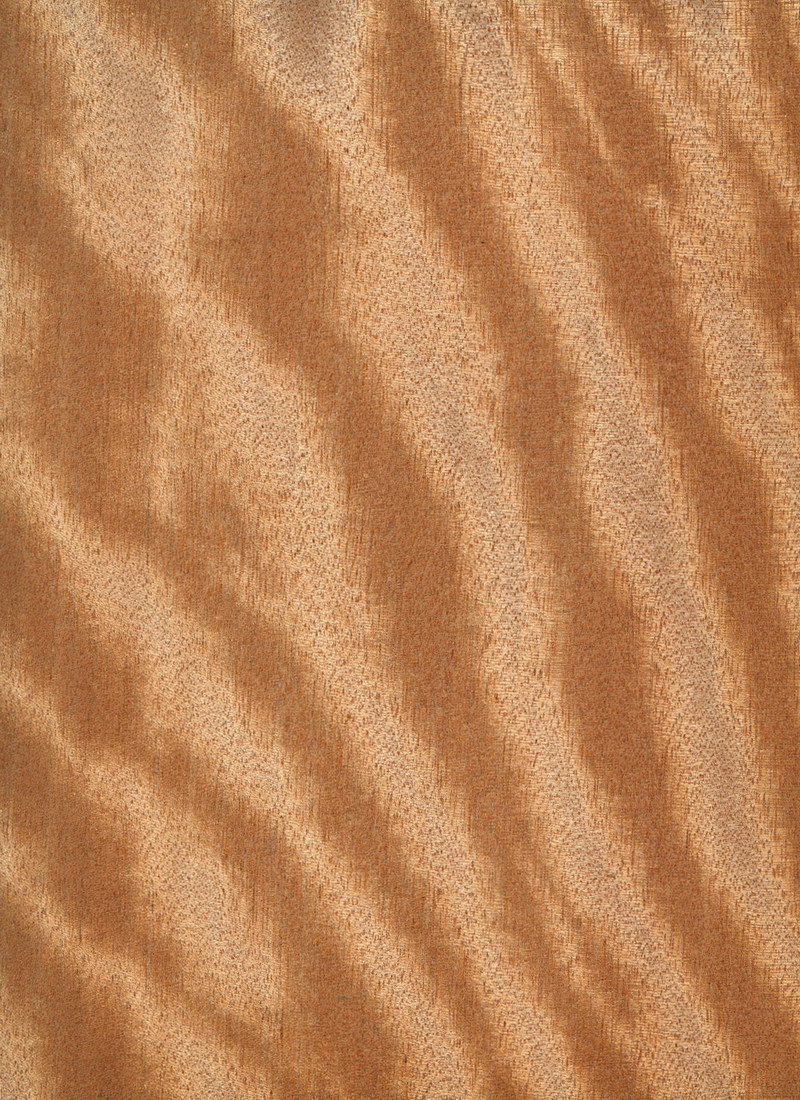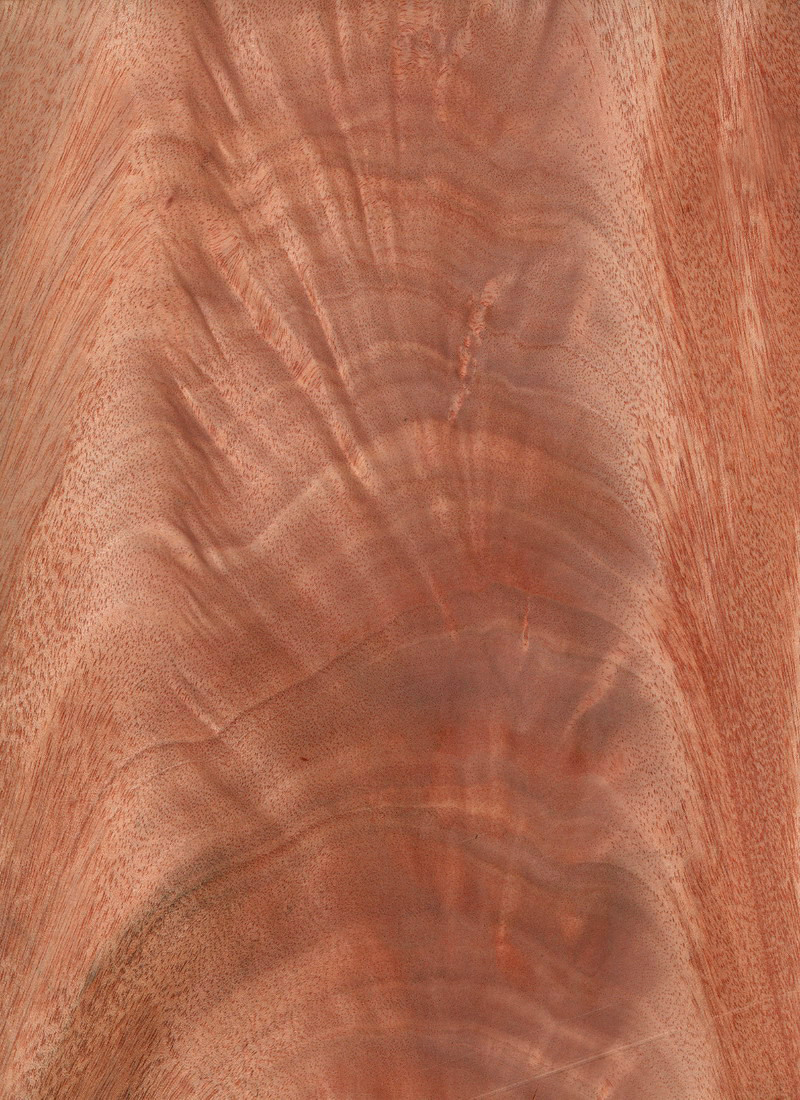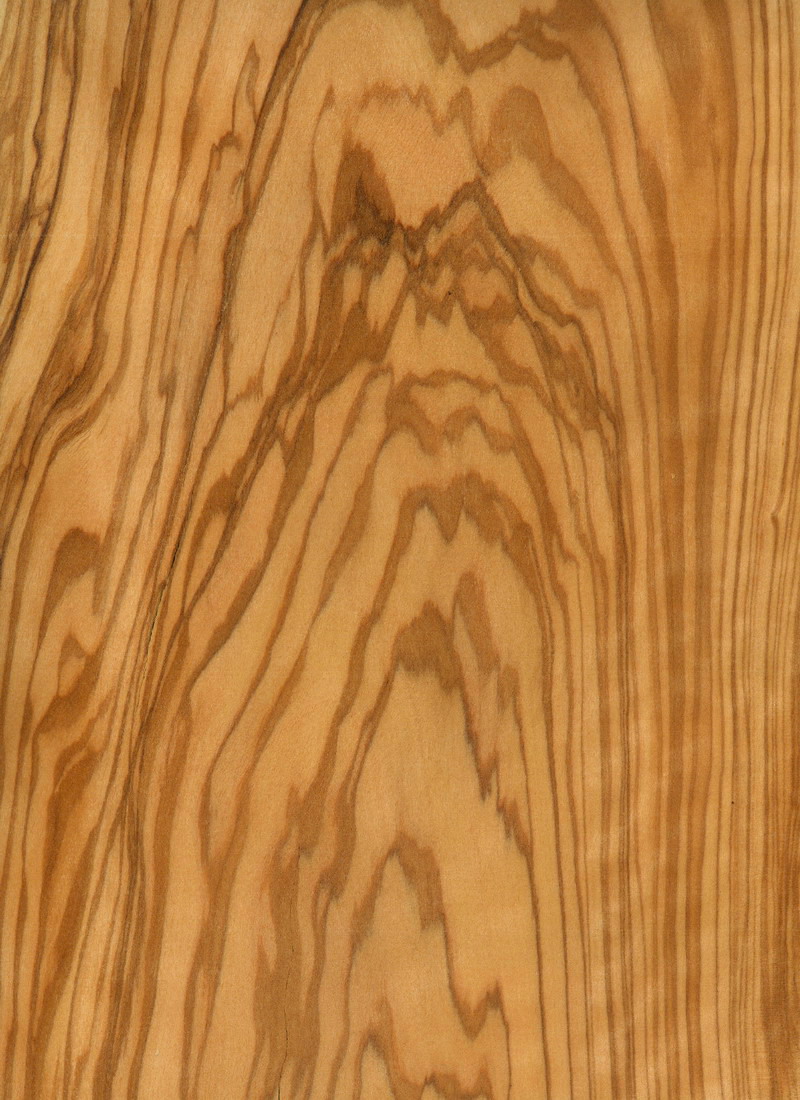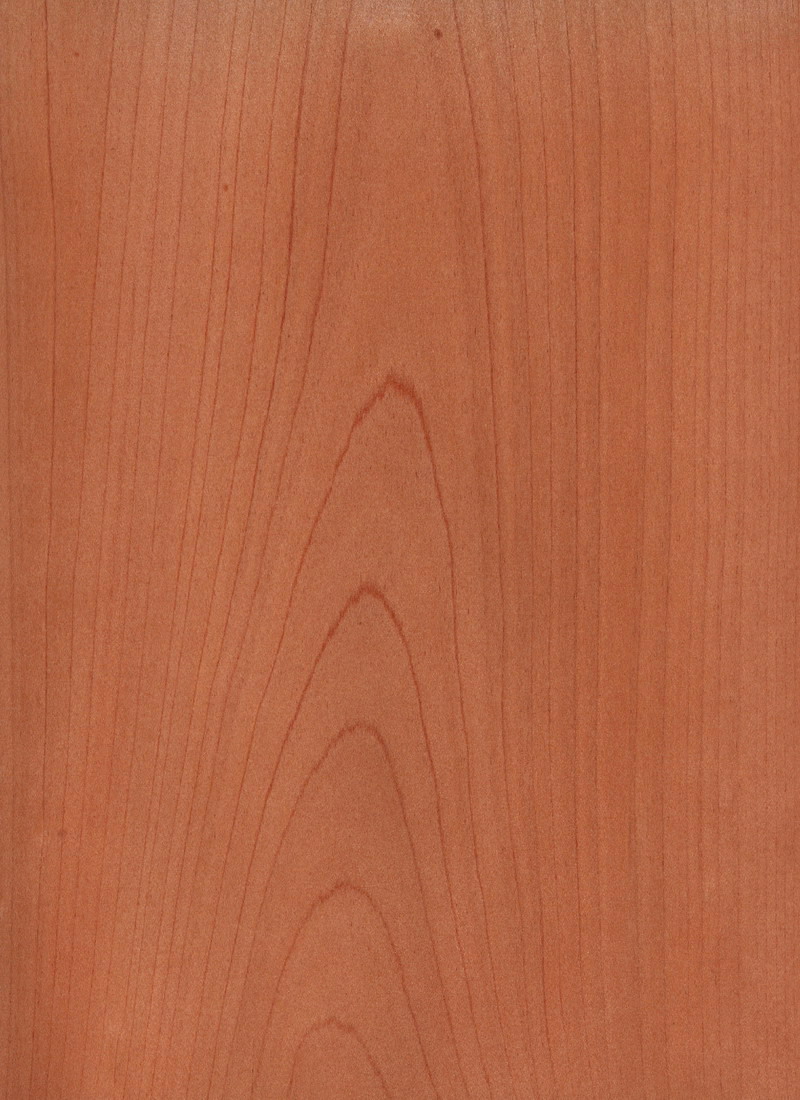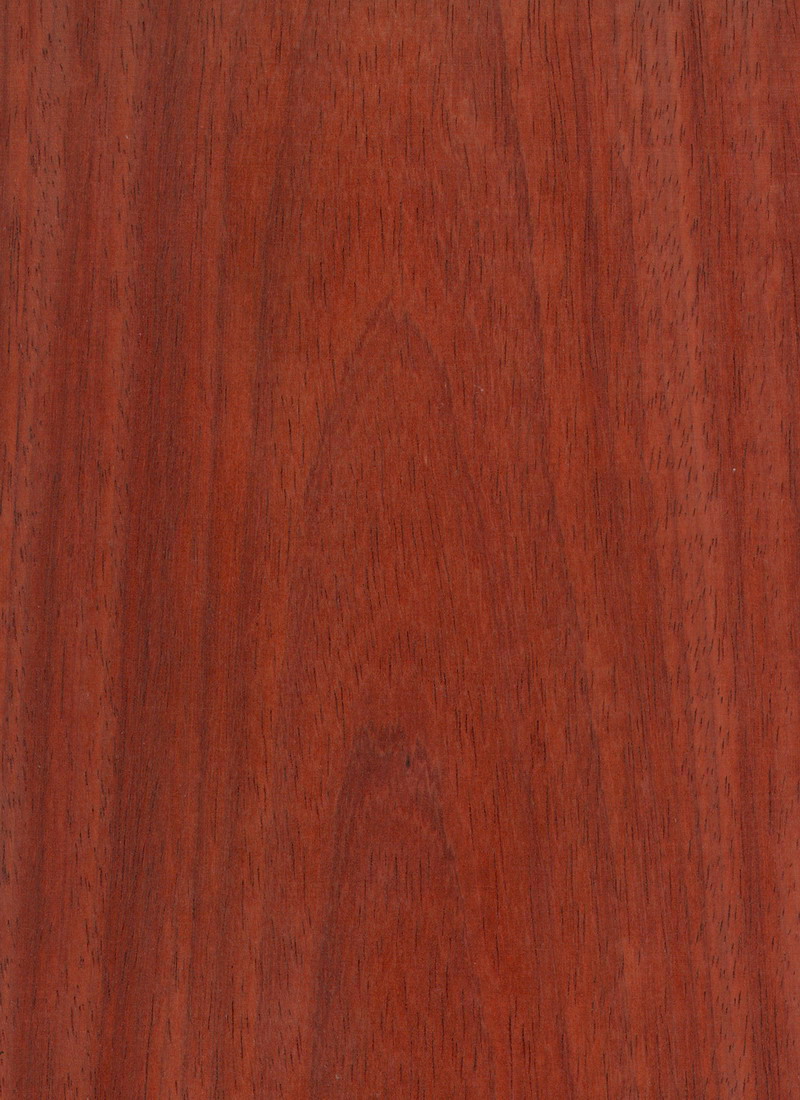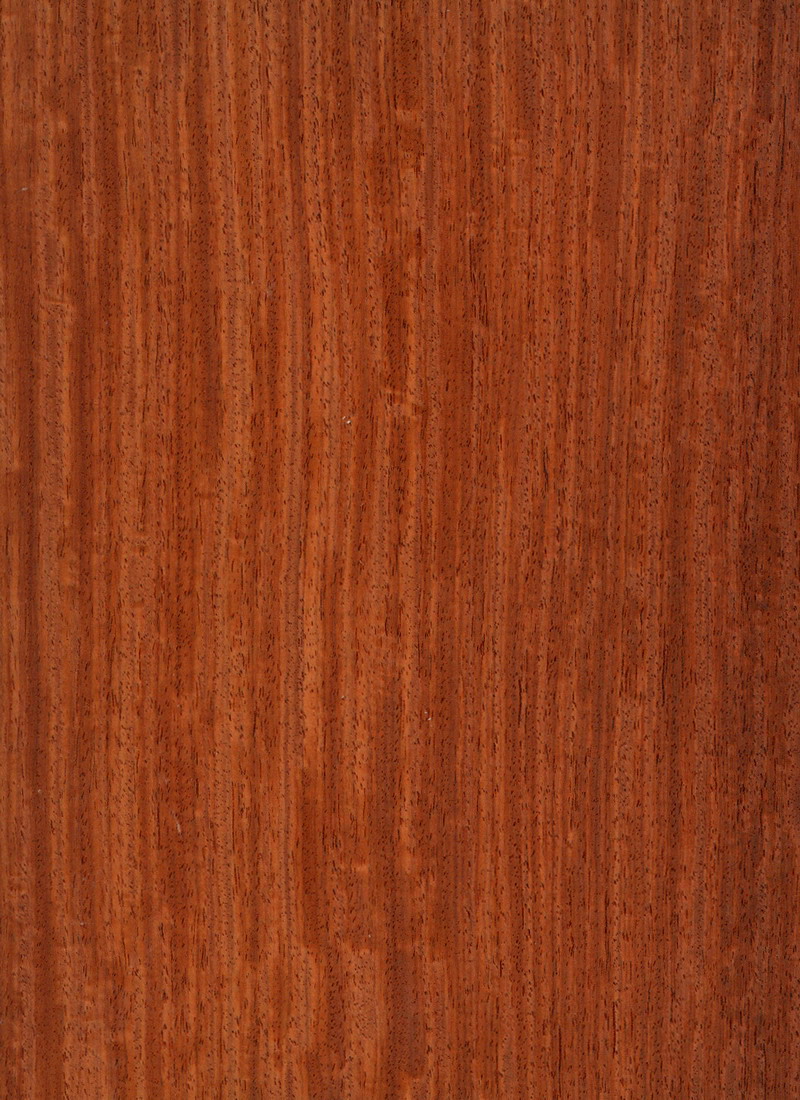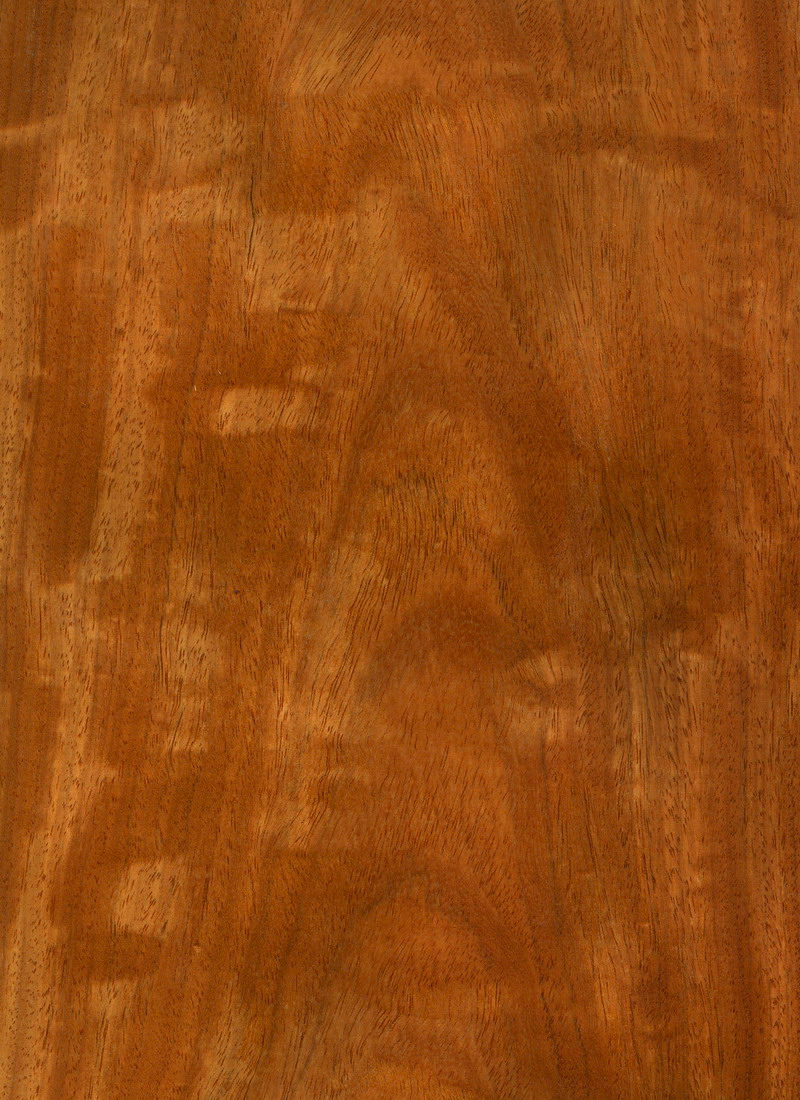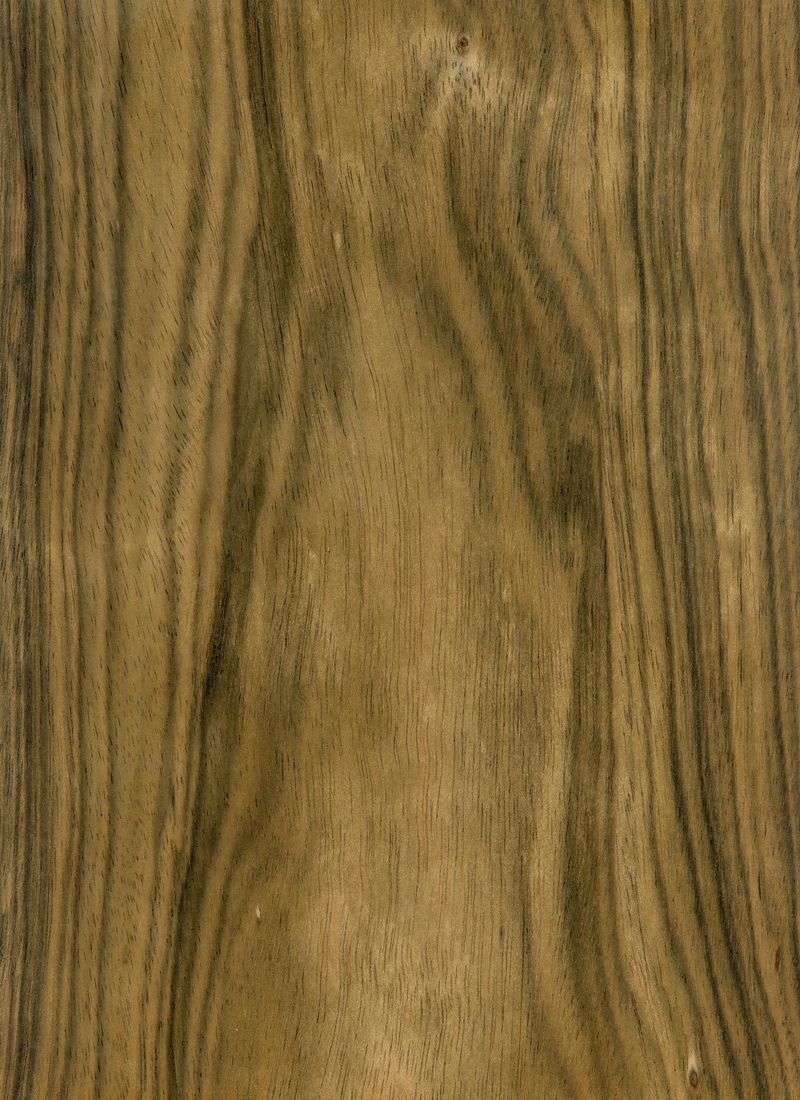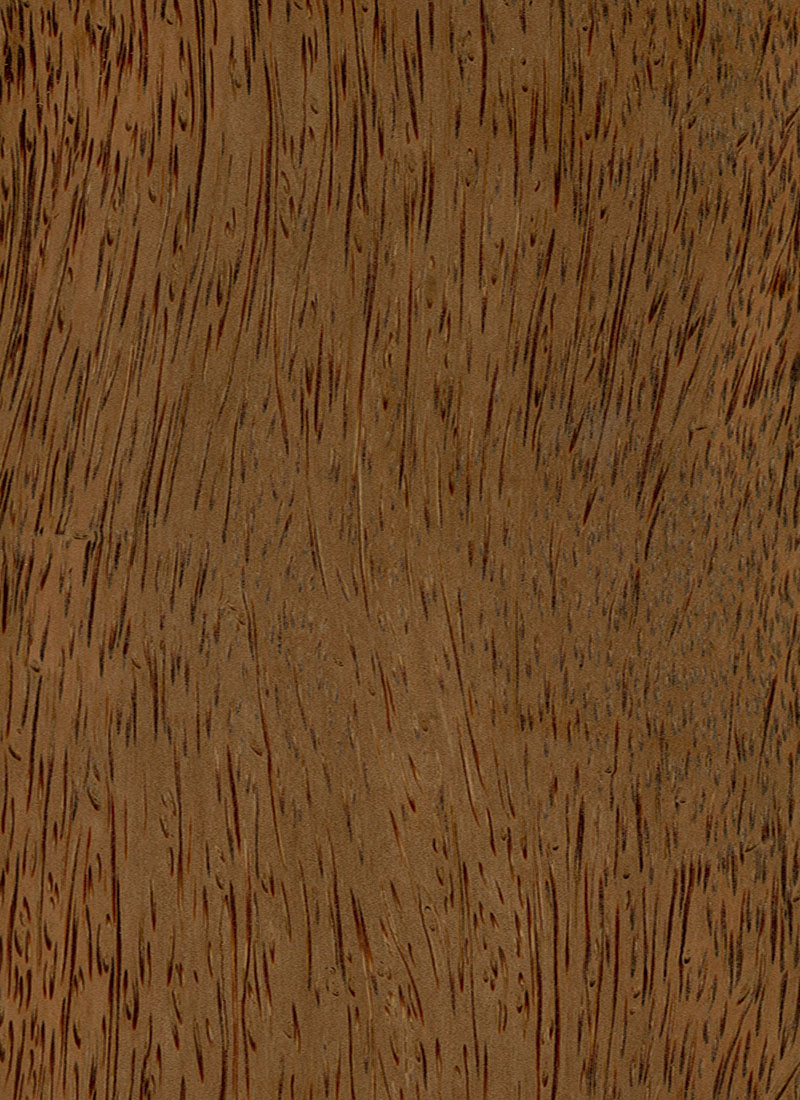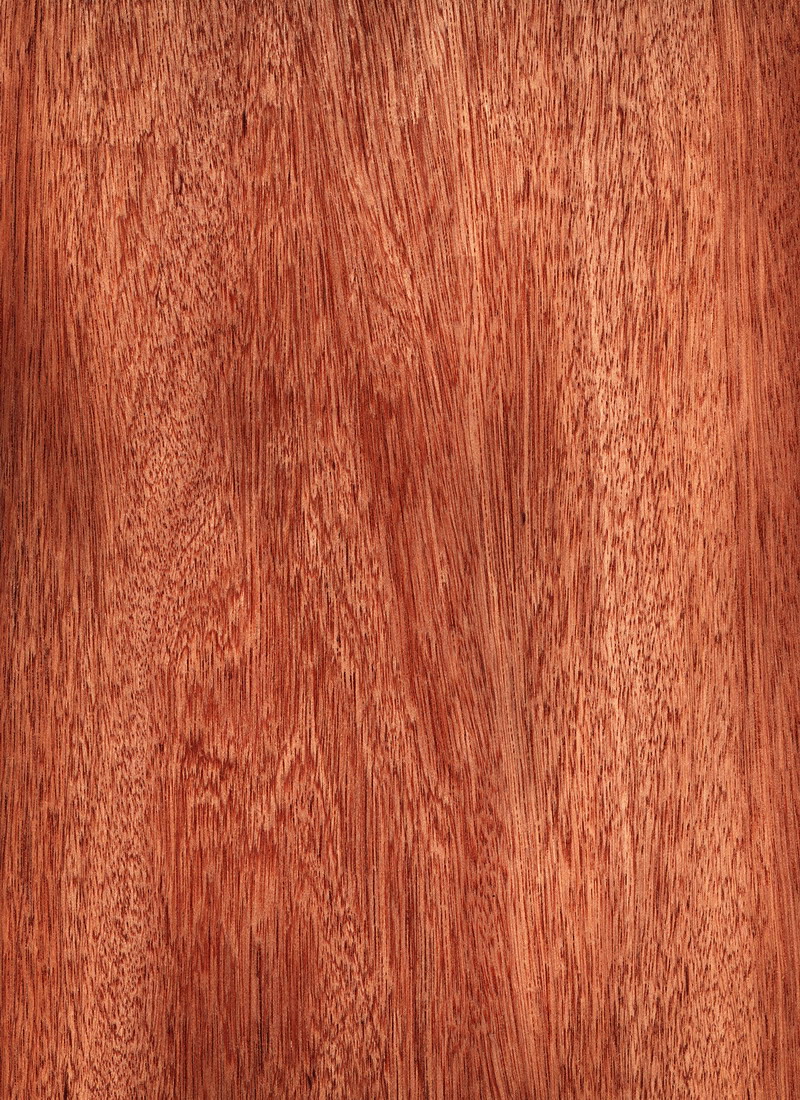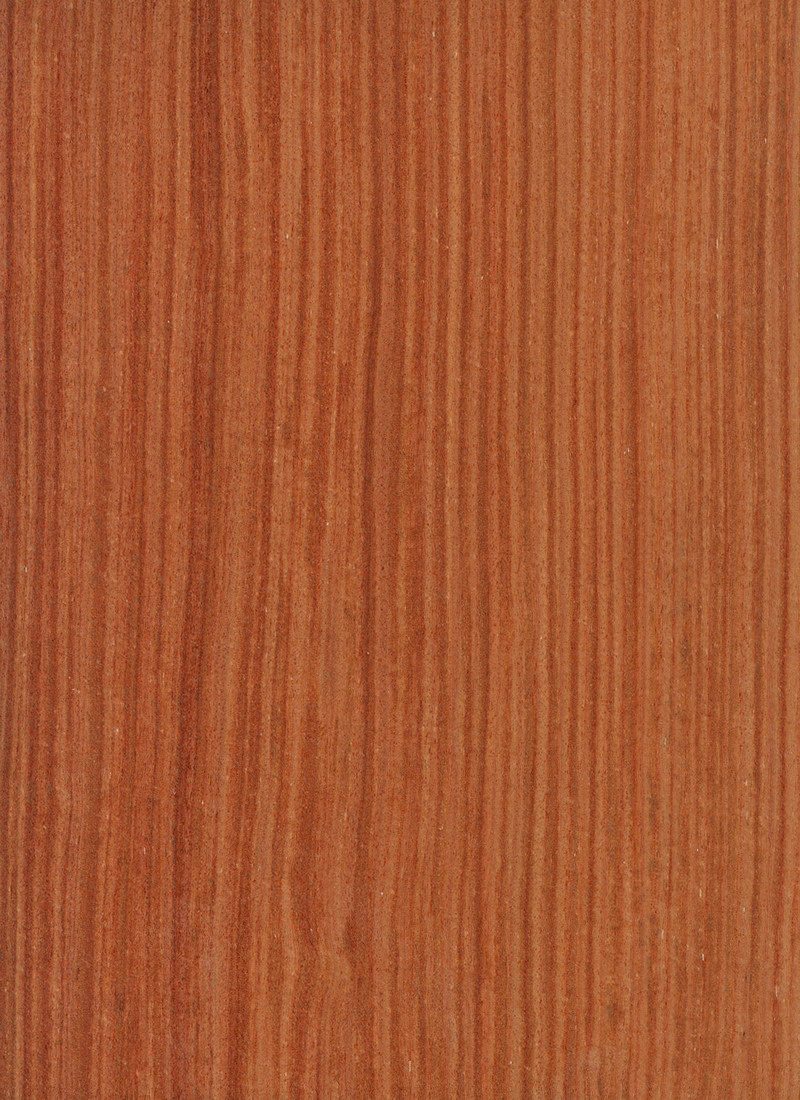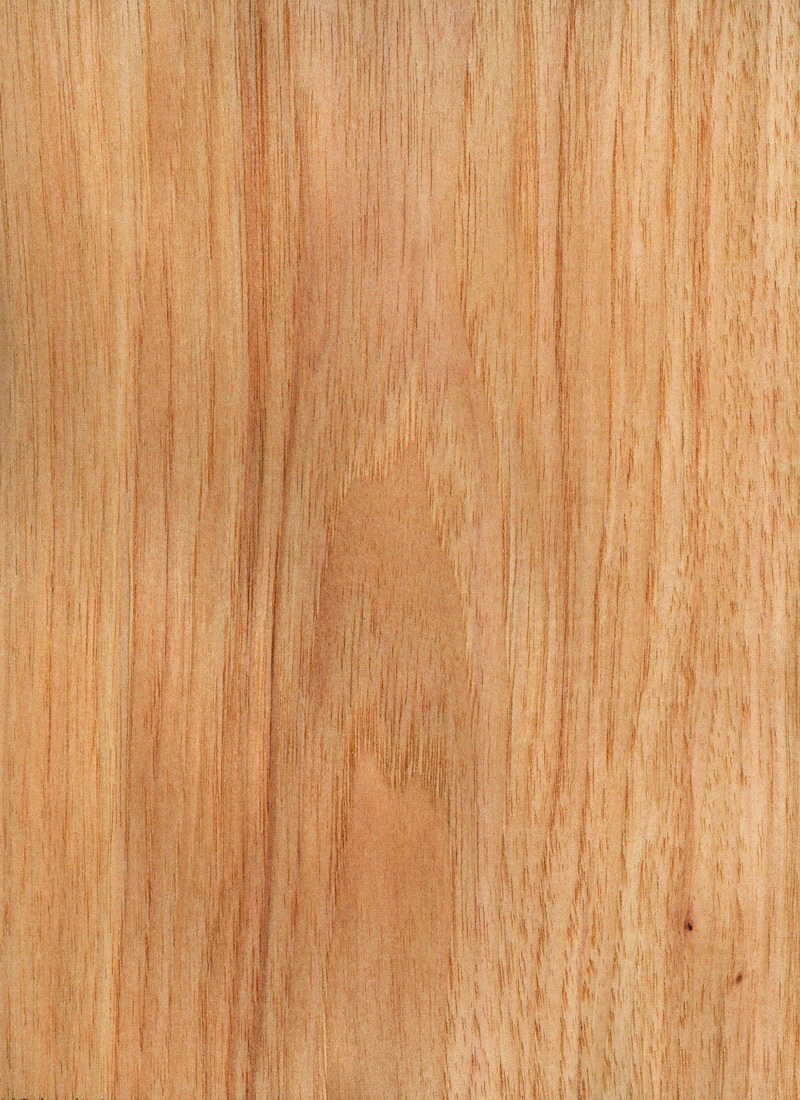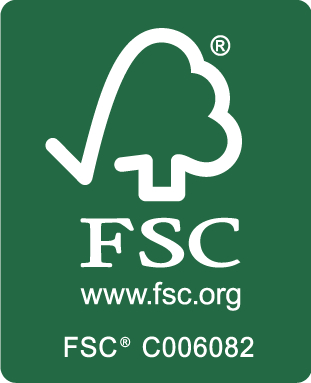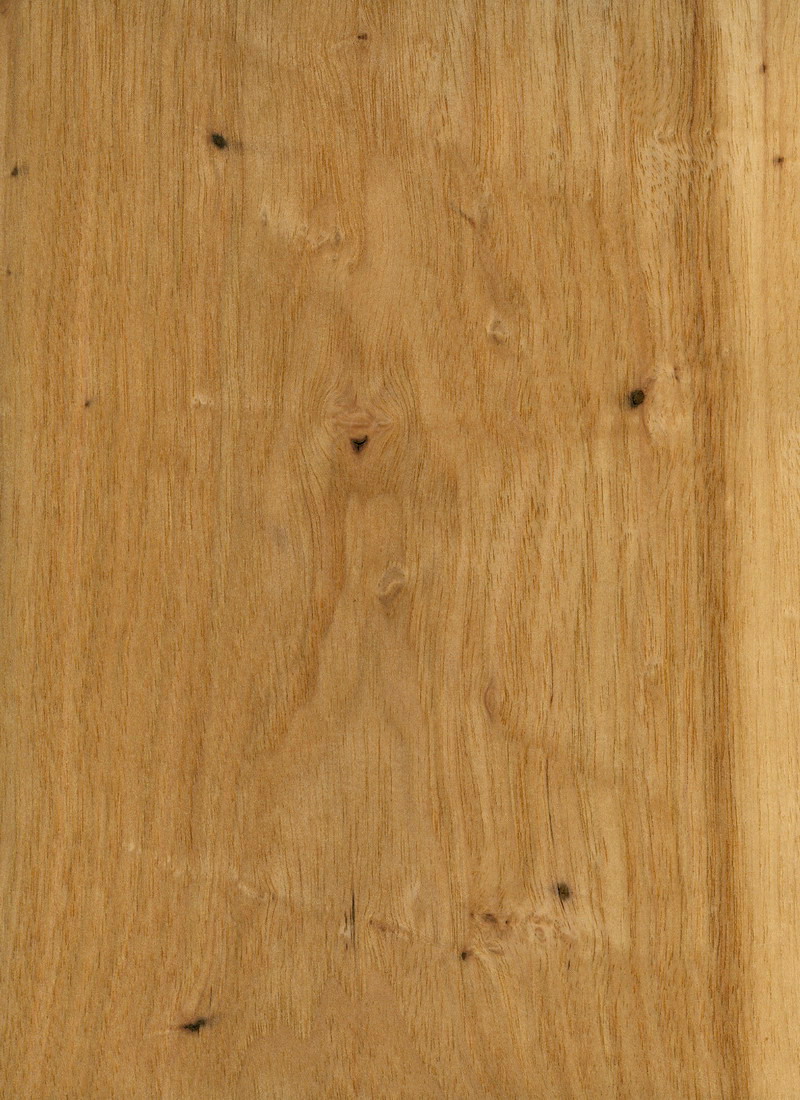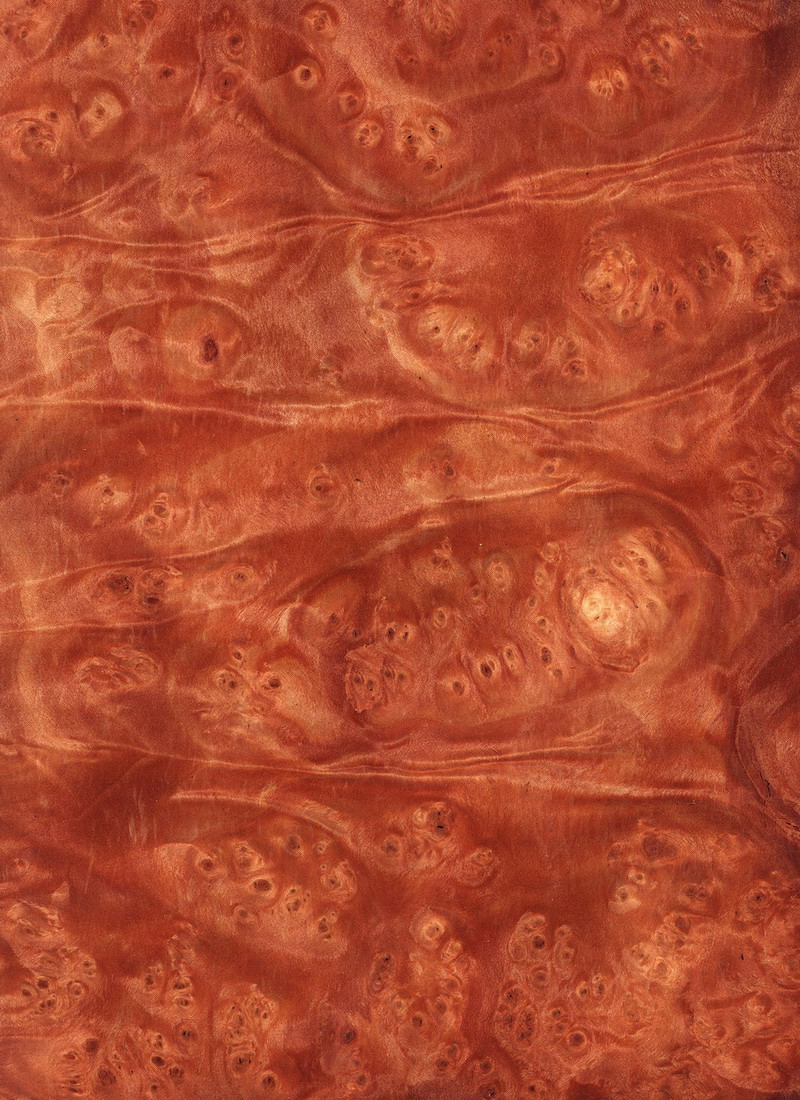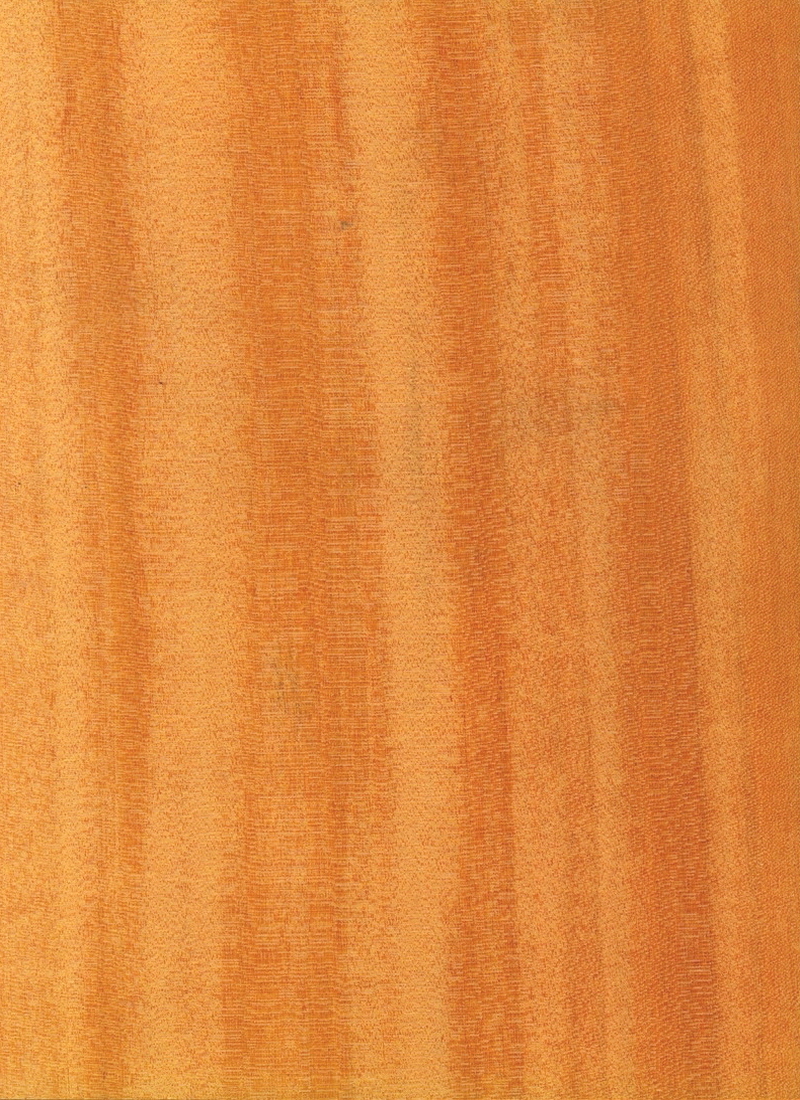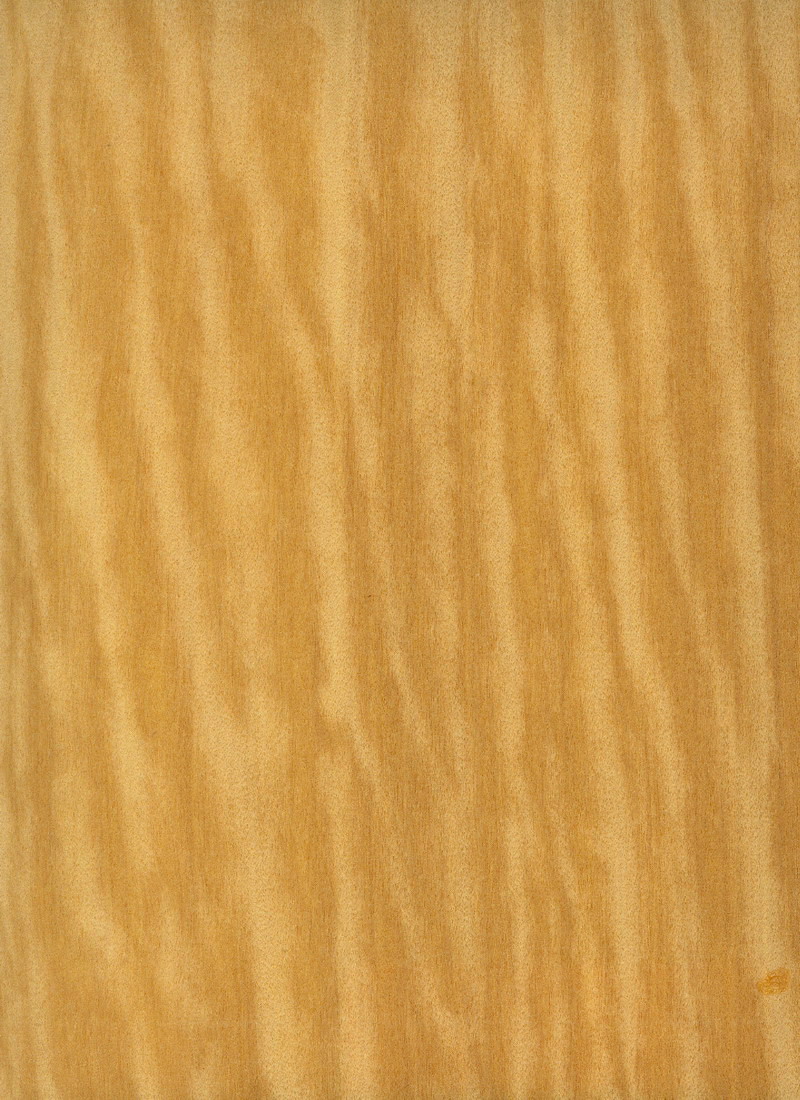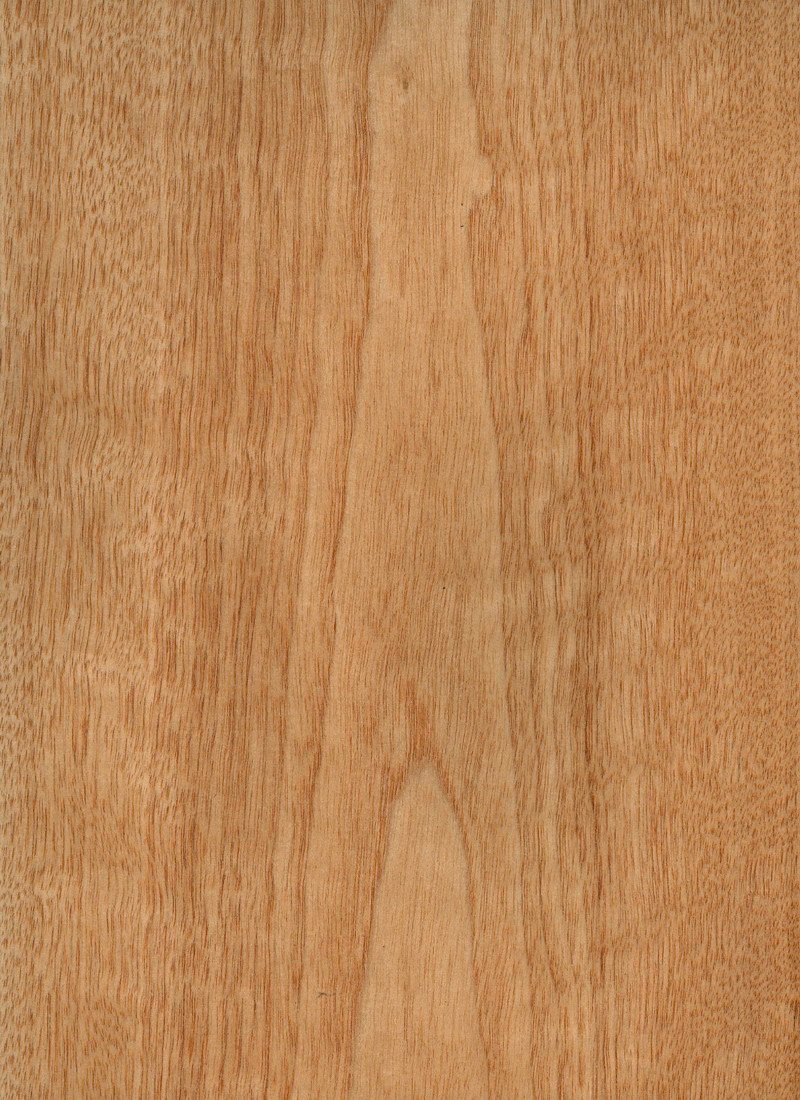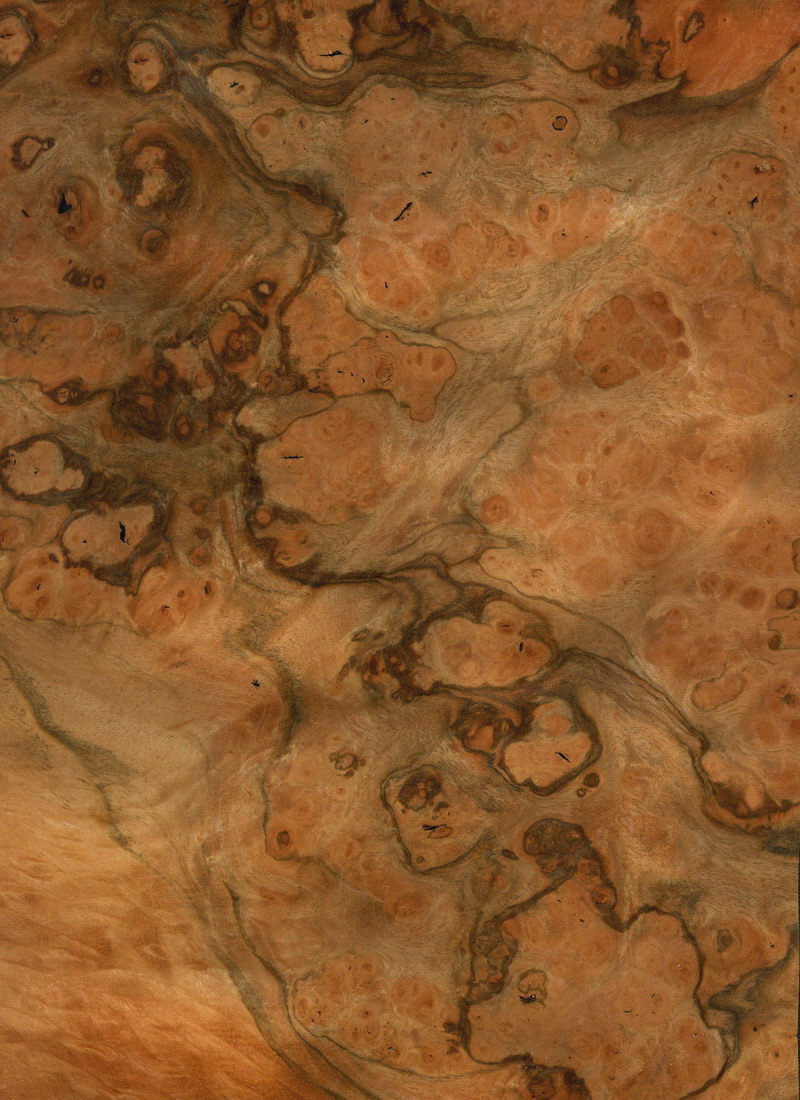Veneer Catalogue
-
 OKOUMEx
OKOUMExOKOUME
Aucoumea klaineanaOkoume quarter cut wood veneer is pale pink to reddish brown; straight grain, sometimes interlocked, slightly wavy, medium coarse texture. Beautiful ropey block mottle figure and naturally lustrous.
Common Uses for Quarter Cut Okoume Wood Veneer: Architectural and acoustic panels, furniture, cabinetry and millwork, as well as private aircraft and yacht interiors.
Other Name(s): Also called Gaboon.
The Tree: Regularly reaches a height of 120-130 feet, with trunks around 3-6 feet.
A Little History: Solid Okoume lumber is much more common in Europe and Africa than the U.S. where the veneer is of higher use.
Region: Africa
[widget id="black-studio-tinymce-5"] -
 OKOUME CROTCHx
OKOUME CROTCHxOKOUME CROTCH
aucoumea klaineanaOkoume flat cut wood veneer is pale pink to reddish brown; straight grain, sometimes interlocked, slightly wavy, medium coarse texture. Beautiful crotch figure and naturally lustrous.
Common Uses for Flat Cut Okoume Crotch Wood Veneer: Architectural and acoustic panels, furniture, cabinetry and millwork, as well as private aircraft and yacht interiors.
Other Name(s): Also called Gaboon.
The Tree: Regularly reaches a height of 120-130 feet, with trunks around 3-6 feet.
A Little History: Solid Okoume lumber is much more common in Europe and Africa than the U.S. where the veneer is of higher use.
Region: Africa
[widget id="black-studio-tinymce-5"] -
 OLIVEWOODx
OLIVEWOODxOLIVEWOOD
olea europaeaOlivewood flat cut wood veneer has a creamy yellow brown marbled appearance. Also can display irregular gray, brown, and black streaks. Interlocked grain, fine textured wood.
Common Uses for Flat Cut Olivewood Veneer: Architectural panels, millwork and cabinetry, as well as furniture.
The Tree: Reaches heights of 25-50 feet with trunk diameters usually only between 3-5 feet.
Region: Europe
[widget id="black-studio-tinymce-5"] -
 OLIVILLOx
OLIVILLOxOLIVILLO
aextoxicon punctatumOlivillo flat cut wood veneer heartwood can range widely from black-brown to reddish brown. Straight and even grain. Also called Red Olivillo.
Common Uses for Flat Cut Olivillo Wood Veneer: Panels, cabinetry, doors and furniture, as well as millwork.
The Tree: Reaches heights around 50-65 feet with a trunk diameter of 3-4 feet.
Region: South America
[widget id="black-studio-tinymce-5"] -
 PADAUK AFRICANx
PADAUK AFRICANxPADAUK AFRICAN
pterocarpus soyauxiiAfrican Padauk quarter cut wood veneer heartwood is blood red changing to dark purple-brown. Straight interlocked grain, medium to coarse textured.
Common Uses for Quarter Cut African Padauk Wood Veneer: Panels, flooring, furniture, cabinetry and millwork, as well as private aircraft and yacht interiors.
The Tree: Reaches heights of 70-100 feet, with trunks around 2 feet in diameter, straight and shaped well.
A Little History: Considered very durable and resistant to bug attack, this wood has also been used outdoors for centuries.
Region: Africa
[widget id="black-studio-tinymce-5"] -
 PADAUK AFRICANx
PADAUK AFRICANxPADAUK AFRICAN
pterocarpus soyauxiiAfrican Padauk flat cut wood veneer heartwood is blood red changing to dark purple-brown. Straight interlocked grain, medium to coarse textured.
Common Uses for Flat Cut African Padauk Wood Veneer: Panels, flooring, furniture, cabinetry and millwork, as well as private aircraft and yacht interiors.
The Tree: Reaches heights of 70-100 feet, with trunks around 2 feet in diameter, straight and shaped well.
A Little History: Considered very durable and resistant to bug attack, this wood has also been used outdoors for centuries.
Region: Africa
[widget id="black-studio-tinymce-5"] -
 PADAUK ANDAMANx
PADAUK ANDAMANxPADAUK ANDAMAN
pterocarpus dalbergiodesAndaman Padauk quarter cut wood veneer heartwood is crimson red with dark red to purplish streaks. Interlocked grain; produces ropey, curly, and stripey veneer. Also medium to coarse texture.
Common Uses for Quarter Cut Andaman Padauk Wood Veneer: Panels, cabinetry, furniture, millwork and musical instruments, as well as both private aircraft and yacht interiors.
Other Name(s): Sometimes called Andaman Redwood.
The Tree: A large tree reaching heights of 80-120 feet. Trunk diameters are usually around 3-5 feet. The bole is usually straight and cylindrical and can be 40 feet or more to the first branch.
Region: Asia
[widget id="black-studio-tinymce-5"] -
 PADAUK ANDAMAN FIGURED (BLOCK MOTTLE)x
PADAUK ANDAMAN FIGURED (BLOCK MOTTLE)xPADAUK ANDAMAN FIGURED (BLOCK MOTTLE)
pterocarpus dalbergiodesAndaman Padauk flat cut wood veneer heartwood is crimson red with dark red to purplish streaks. Interlocked grain; also medium to coarse texture. Beautiful block mottle figure.
Common Uses for Flat Cut Andaman Padauk Wood Veneer: Panels, cabinetry, furniture, millwork and musical instruments, as well as both private aircraft and yacht interiors.
Other Name(s): Sometimes called Andaman Redwood.
The Tree: A large tree reaching heights of 80-120 feet. Trunk diameters are usually around 3-5 feet. The bole is usually straight and cylindrical and can be 40 feet or more to the first branch.
Region: Asia
[widget id="black-studio-tinymce-5"] -
 PALDAOx
PALDAOxPALDAO
dracontomelon daoPaldao flat cut wood veneer heartwood is gray-brown with a greenish color, brown to black streaks. Interlocked grain; medium to coarse texture. Also displays contrasty cathedrals.
Common Uses for Flat Cut Paldao Wood Veneer: Architectural panels, cabinetry, furniture and millwork, as well as musical instruments.
The Tree: Regularly reaches heights of 100-120 feet, with trunk diameters usually around 5-7 feet.
A Little History: Often a substitute for Walnut because of its similarities in characteristics and looks.
Region: Asia
[widget id="black-studio-tinymce-5"] -
 PALDAOx
PALDAOxPALDAO
dracontomelon daoPaldao quarter cut wood veneer heartwood is gray-brown with a greenish color, brown to black streaks. Interlocked grain; medium to coarse texture. Also displays contrasty striping.
Common Uses for Quarter Cut Paldao Wood Veneer: Architectural panels, cabinetry, furniture and millwork, as well as musical instruments.
The Tree: Regularly reaches heights of 100-120 feet, with trunk diameters usually around 5-7 feet.
A Little History: Often a substitute for Walnut because of its similarities in characteristics and looks.
Region: Asia
[widget id="black-studio-tinymce-5"] -
 PALMx
PALMxPALM
cocos nuciferaPalm tree quarter cut wood veneer color tones and hues range widely from golden to ebony. Dark chocolate brown flecks are also prominent. The rich color and unique texture gives Palm veneer an exotic appearance.
Common Uses for Quarter Cut Palm Wood Veneer: Architectural panels, furniture and millwork.
The Tree: Reaches 100 feet or more in height. This tropical tree now grows worldwide in moist areas, especially near salt water.
Region: Africa
[widget id="black-studio-tinymce-5"] -
 PALO MARIAx
PALO MARIAxPALO MARIA
calophyllum brasiliensePalo Maria flat cut wood veneer heartwood is red brown to pale red to pink; pale pink sapwood. Interlocked grain with striped figure.
Common Uses for Flat Cut Palo Maria Wood Veneer: Panels, cabinetry and furniture, as well as millwork. Also private aircraft and yacht interiors.
The Tree: Regularly reaches a height of 100-150 feet with trunk diameters around 3-6 feet.
A Little History: Used widely in the tropics for general construction, flooring, furniture and more.
Region: South America
[widget id="black-studio-tinymce-5"] -
 PAO ROSAx
PAO ROSAxPAO ROSA
swartzia fistuloidesPao Rosa quarter cut wood veneer heartwood is dark brown to reddish brown, sometimes with golden tones. Yellowish white sapwood. Wavy, interlocked grain.
Common Uses for Quarter Cut Pao Rosa Wood Veneer: Panels, cabinetry, furniture and millwork.
Other Name(s): Also called Pau Rosa veneer.
The Tree: Grows to heights of 90 feet with trunks usually around 3 feet in width.
Region: Africa
[widget id="black-studio-tinymce-5"] -
 PEARWOODx
PEARWOODxPEARWOOD
pyrus communisPearwood quarter cut wood veneer is rosy cream-pink to light pink. Pattern has a modest, distinct, leafy grain, sometimes with a mottled figuring. This veneer has a very fine, straight grain with a close and uniform texture. Sometimes used as a substitute for ebony when stained.
Common Uses for Pearwood Veneer: Architectural millwork and panels, high-end furniture, cabinetry and doors, as well as musical instruments.
Other Name(s): European Pearwood. Swiss Pearwood refers to the premium veneer type of this species.
The Tree: Pearwood can reach heights of 60 feet with trunk diameters generally between 2 to 3 feet.
A Little History: Pearwood is used in Europe much in the same way that Black Cherry is used in the U.S.: as a popular and high-quality domestic hardwood.
Region: Europe
[widget id="black-studio-tinymce-5"] -
 PEARWOODx
PEARWOODxPEARWOOD
pyrus communisPearwood flat cut wood veneer is rosy cream-pink to light pink. Pattern has a modest, distinct, leafy grain, sometimes with a mottled figuring. This veneer has a very fine, straight grain with a close and uniform texture. Sometimes used as a substitute for ebony when stained.
Common Uses for Pearwood Flat Cut Veneer: Architectural millwork and panels, high-end furniture, cabinetry and doors, as well as musical instruments.
Other Name(s): European Pearwood. Swiss Pearwood refers to the premium type of this species.
The Tree: Pearwood can reach heights of 60 feet with trunk diameters generally between 2 to 3 feet.
A Little History: Pearwood is used in Europe much in the same way that Black Cherry is used in the U.S.: as a popular and high-quality domestic hardwood.
Region: Europe
[widget id="black-studio-tinymce-5"] -

 PECANx
PECANxPECAN
carya illinoinensisPecan flat cut wood veneer heartwood is a cream color to pinkish brown, with darker streaks throughout. Nearly white sapwood. Straight close grain, as well as finely textured. We also carry Pecky Pecan veneer.
Common Uses for Flat Cut Pecan Wood Veneer: Architectural panels, cabinetry, flooring and furniture, as well as millwork.
Other Name(s): Pecan Hickory.
The Tree: Regularly reaches heights of 170 feet with massive trunk diameters around 6-7 feet.
A Little History: Very long-lived, Pecan trees of 350 years have been known to exist.
Region: North America
[widget id="black-studio-tinymce-5"]
-

 PECAN PECKYx
PECAN PECKYxPECAN PECKY
carya illinoinensisPecky Pecan flat cut wood veneer heartwood is a cream color to pinkish brown, with darker streaks throughout. Nearly white sapwood. Straight close grain, as well as finely textured.
Common Uses for Pecky Pecan Wood Veneer: Architectural panels, cabinetry, flooring and furniture, as well as millwork.
Other Name(s): Also called Pecan Hickory.
The Tree: Regularly reaches heights of 170 feet with massive trunk diameters around 6-7 feet.
A Little History: Very long-lived, Pecan trees of 350 years have been known to exist.
Region: North America
[widget id="black-studio-tinymce-5"]
-
 PELLIN BURLx
PELLIN BURLxPELLIN BURL
Nothofagus obliquaPellin burl wood veneer has a wide range of colors: pink, brown, golden reds are all common. Wavy grain, coarse to medium texture.
Common Uses for Pellin Burl Wood Veneer: Architectural panels, high end cabinetry, furniture and millwork, as well as private aircraft and yacht interiors.
The Tree: Regularly reaches a height of 175, with trunk diameters up to 6.5 feet.
Region: South America
[widget id="black-studio-tinymce-5"] -
 PEROBAx
PEROBAxPEROBA
paratecoma perobaPeroba quarter cut wood veneer heartwood varies from a light olive brown, pink beige or pink brown. Often has streaks. These streaks or stripes are darker, with an irregular wavy grain. Fine textured wood.
Common Uses for Quarter Cut Peroba Wood Veneer: Panels, cabinetry, flooring and furniture, as well as millwork.
Other Name(s): White Peroba.
The Tree: Grows to heights around 130 feet, with trunks only usually around 1-3 feet.
Region: South America
[widget id="black-studio-tinymce-5"] -
 PEROBA DYEDx
PEROBA DYEDxPEROBA DYED
paratecoma perobaPeroba quarter cut wood veneer heartwood usually varies from a light olive brown, pink beige or pink brown. Often has streaks. These streaks or stripes are normally darker, with an irregular wavy grain. Dyed Peroba veneer is a golden yellow brown. Also finely textured and ropey.
Common Uses for Quarter Cut Dyed Peroba Wood Veneer: Panels, cabinetry, flooring and furniture, as well as millwork.
Other Name(s): White Peroba.
The Tree: Grows to heights around 130 feet, with trunks only usually around 1-3 feet.
Region: South America
[widget id="black-studio-tinymce-5"] -
 PERSIMMONx
PERSIMMONxPERSIMMON
diospyros virginianaPersimmon flat cut wood veneer is mostly straw colored to light brown sapwood. The heartwood is very thin and dark brown to almost black. Although narrow, the Persimmon heartwood is an excellent substitute for Ebony veneer. Straight grained, finely textured.
Common Uses for Flat Cut Persimmon Wood Veneer: Architectural panels, cabinetry and furniture, as well as millwork.
Other Name(s): Common Persimmon.
The Tree: Grows to a height of 60-80 feet, while trunk diameters are usually only 1-2 feet.
Region: North America
[widget id="black-studio-tinymce-5"] -
 PIMENTO BURLx
PIMENTO BURLxPIMENTO BURL
pimenta officinalisPimento burl wood veneer is tan to light brown, with streaks of dark brown, highly figured.
Common Uses for Pimento Wood Veneer: High end panels, high end cabinetry, furniture and millwork. Also private aircraft and yacht interiors.
Region: South America
[widget id="black-studio-tinymce-5"] -

 PINE KNOTTYx
PINE KNOTTYxPINE KNOTTY
pinus strobusKnotty Pine quarter cut wood veneer has pale white sapwood, while the heartwood is the smaller, slightly darker portion. Straight grained, not contrasty; fine textured. Rustic aesthetic.
Common Uses for Quarter Cut Knotty Pine Wood Veneer: Architectural panels, cabinetry, flooring and furniture, as well as millwork.
Other Name(s): Also called White Pine.
The Tree: Regularly reaches heights of over 100 feet with trunk diameters over 4 feet.
A Little History: Pine was historically used for masts in wood war ships, and in winter a tea was brewed from the needles to prevent scurvy.
Region: North America
[widget id="black-studio-tinymce-5"]
-
 PINE PARANAx
PINE PARANAxPINE PARANA
araucaria angustifoliaParana Pine quarter cut wood veneer is light to medium brown with big red streaks occasionally in the heartwood portion. White to yellow sapwood. Grain is straight with growth ring figure.
Common Uses for Quarter Cut Parana Pine Wood Veneer: Architectural panels, cabinetry and furniture, as well as millwork.
The Tree: Regularly reaches a height 70-115 feet, with trunk diameters only around 2-3 feet.
A Little History: Despite its common name, the tree is technically not a true pine in the Pinus genus.
Region: South America
[widget id="black-studio-tinymce-5"]

